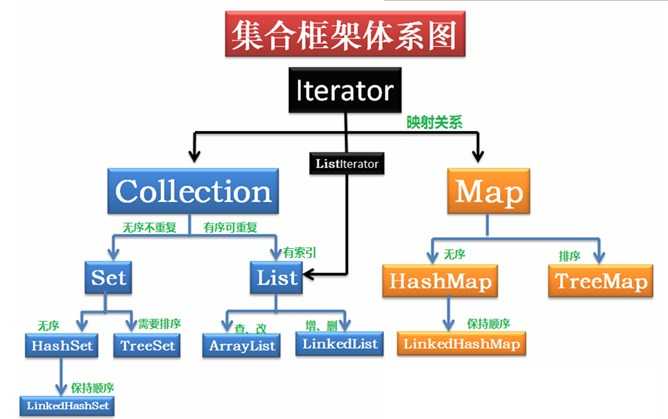标签:

List接口中的元素的特点:
List中的元素有序,可以重复。
public static void main(String[] args) { List<String> list=new ArrayList<String>(); list.add("111"); list.add("222"); list.add("333"); //第一种遍历方法使用foreach遍历List for (String str : list) {//也可以改写for(int i=0;i<list.size();i++)这种形式 System.out.println(str); } //第二种遍历,把链表变为数组相关的内容进行遍历 String[] strArray=new String[list.size()]; list.toArray(strArray); for(int i=0;i<strArray.length;i++) //这里也可以改写为foreach(String str:strArray)这种形式 { System.out.println(strArray[i]); } //第三种遍历 使用迭代器进行相关遍历 Iterator<String> ite=list.iterator(); while(ite.hasNext()) { System.out.println(ite.next()); } }
public static void main(String[] args) { List<String> list=new LinkedList<String>(); list.add("111"); list.add("222"); list.add("333"); //LinkedList遍历的第一种方式使用数组的方式 String[] strArray=new String[list.size()]; list.toArray(strArray); for(String str:strArray) { System.out.println(str); } //LinkedList遍历的第二种方式 for(String str:list) { System.out.println(str); } }
public static void main(String[] args) { Set<String> set=new HashSet<String>(); set.add("111"); set.add("222"); set.add("333"); //遍历集合的第一种方法,使用数组的方法 String[] strArray=new String[set.size()]; strArray=set.toArray(strArray); for(String str:strArray)//此处也可以使用for(int i=0;i<strArray.length;i++) { System.out.println(str); } //遍历集合的第二中方法,使用set集合直接遍历 for(String str:set) { System.out.println(str); } //遍历集合的第三种方法,使用iterator迭代器的方法 Iterator<String> iterator=set.iterator(); while(iterator.hasNext()) { System.out.println(iterator.next()); } }
public static void main(String[] args) { //String实体类中实现Comparable接口,所以在初始化TreeSet的时候, //无需传入比较器 TreeSet<String> treeSet=new TreeSet<String>(); treeSet.add("d"); treeSet.add("c"); treeSet.add("b"); treeSet.add("a"); Iterator<String> iterator=treeSet.iterator(); while(iterator.hasNext()) { System.out.println(iterator.next()); } }
public static void main(String[] args) { //方式1 Map map = new HashMap(); map.put("A", "1233"); map.put("B", "12334"); map.put("C", "12334"); Iterator iter = map.entrySet().iterator(); while (iter.hasNext()) { Map.Entry entry = (Map.Entry) iter.next(); System.out.println(entry.getKey() + "--" + entry.getValue()); } //方式2效率高 iter = map.keySet().iterator(); while (iter.hasNext()) { Object key = iter.next(); System.out.println(key + "--" + map.get(key)); } }
标签:
原文地址:http://www.cnblogs.com/my-haohao/p/5659104.html